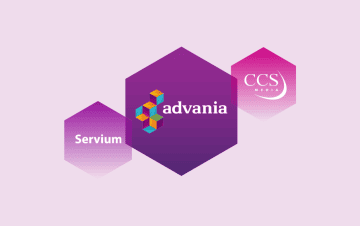Despite the surge in Internet-connected devices, today the Internet of Things (IoT) is still in its infancy. But it’s approaching like a runaway train. In fact, leading commentators predict that there will be 41.6 billion connected “things” by 2025 – generating a whopping 79.4 zettabytes (ZB) of data – that’s 74,900,000,000,000,000,000,000 bytes, just to really emphasise how massive a number that is! This spells an abundance of opportunities for forward thinking businesses.
It stands to reason therefore, that more businesses are seeking to capitalise on IoT, whether that’s generating and mining new data for competitive advantage, connecting the previously unconnectable for greater insight and control, or automation to create efficiencies and save money. Whatever type of IoT project you have in mind for your business, it quickly becomes apparent the importance of hardware in building out the right architecture to support it.
The dependency on hardware might sound obvious, but there’s a lot of consider. So, just where does hardware feature in the IoT value chain?
1. Sensors
These are the input devices and can come from a variety of sources such as light, temperature, motion and pressure. Humidity sensors, thermostats, wearable tech and production lines would all be considered sensors that generate the data in your IoT system. Naturally, these input sources tend to be physical devices of one kind or another.
2. Data acquisition and processing
From here the data is sent from the sensor to an edge computing device referred to as an IoT gateway – commonly a PC or server, although some sensors do also perform the role of IoT gateway in some instances. This device will typically run an IoT-specific application enabling the data received to be analysed for value before being handed off to the cloud or data centre.
3. Data transmission
Because IoT generates A LOT of data, the IoT gateway filters out the most meaningful data to pass onto the cloud. The gateway hardware will normally perform the role of data transmission and securely send the data on to the cloud.
4. Big Data and Data Lakes
As much as the data has already been analysed at the edge to only send on that which is most relevant, a data lake begins to build in the data centre. This is Big Data in action – inside the data centre deeper analytics can occur to spot long-term trends and derive deeper value. This requires powerful compute and large-scale storage. IoT data is also being used to fuel Machine Learning and Artificial Intelligence (AI) development.
The bottom line is that it’s a lot of hardware to integrate together into a coherent and functional system. It’s also why many organisations are choosing to harmonise hardware – choosing single vendors like Lenovo who operate across all parts of the IoT ecosystem, and platforms like Intel® that have an end-to-end family of products that are ready to work together as a secure and trusted system.
To learn more about building your IoT architecture and the Intel® IoT platform, why not read our new Solution Guide: Compute at the Edge – Getting your IoT project right.
You may also be interested in
All you need to know as CCS Media and Servium become Advania
On 4th August 2025, CCS Media and Servium will become Advania. Work is underway to make the transition as smooth as possible, but there will be some important changes. Find out about what’s changing and what’s staying the same.
A new name for CCS Media & Servium is coming
This summer, Advania UK companies CCS Media and Servium will change their names to better reflect the unified business. Together, we will all be known as Advania.
End of an “EA-ra” but Microsoft CSP opportunities await
We take a deep dive into Microsoft’s curtain call on Enterprise Agreements and the move to CSP. Find out how an expert, partner-led approach from Servium and Advania can help your business optimise spend, drive innovation, and fully leverage Microsoft Cloud.
 Steve Dawes
Steve Dawes





